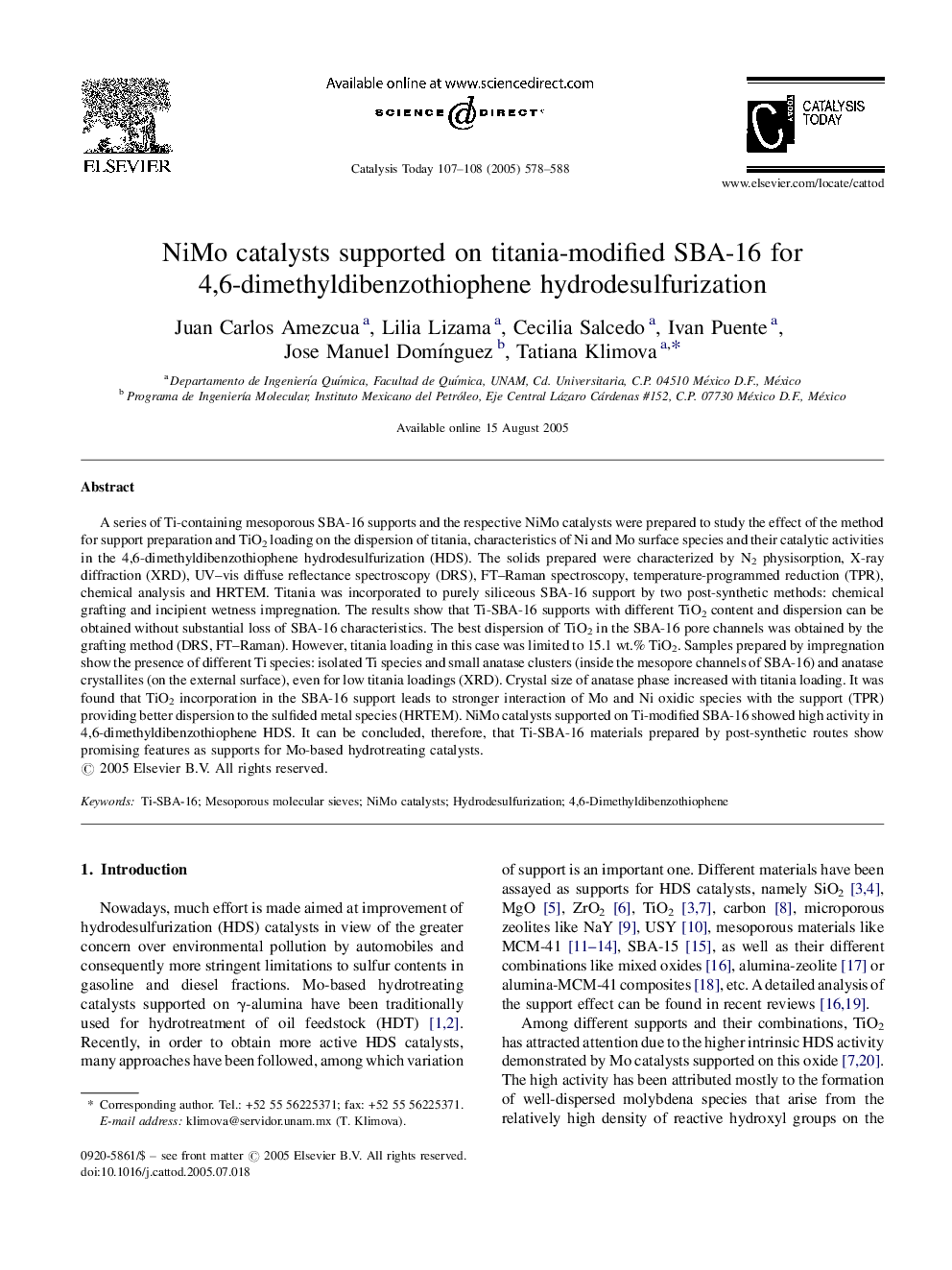| Article ID | Journal | Published Year | Pages | File Type |
|---|---|---|---|---|
| 9610237 | Catalysis Today | 2005 | 11 Pages |
Abstract
A series of Ti-containing mesoporous SBA-16 supports and the respective NiMo catalysts were prepared to study the effect of the method for support preparation and TiO2 loading on the dispersion of titania, characteristics of Ni and Mo surface species and their catalytic activities in the 4,6-dimethyldibenzothiophene hydrodesulfurization (HDS). The solids prepared were characterized by N2 physisorption, X-ray diffraction (XRD), UV-vis diffuse reflectance spectroscopy (DRS), FT-Raman spectroscopy, temperature-programmed reduction (TPR), chemical analysis and HRTEM. Titania was incorporated to purely siliceous SBA-16 support by two post-synthetic methods: chemical grafting and incipient wetness impregnation. The results show that Ti-SBA-16 supports with different TiO2 content and dispersion can be obtained without substantial loss of SBA-16 characteristics. The best dispersion of TiO2 in the SBA-16 pore channels was obtained by the grafting method (DRS, FT-Raman). However, titania loading in this case was limited to 15.1Â wt.% TiO2. Samples prepared by impregnation show the presence of different Ti species: isolated Ti species and small anatase clusters (inside the mesopore channels of SBA-16) and anatase crystallites (on the external surface), even for low titania loadings (XRD). Crystal size of anatase phase increased with titania loading. It was found that TiO2 incorporation in the SBA-16 support leads to stronger interaction of Mo and Ni oxidic species with the support (TPR) providing better dispersion to the sulfided metal species (HRTEM). NiMo catalysts supported on Ti-modified SBA-16 showed high activity in 4,6-dimethyldibenzothiophene HDS. It can be concluded, therefore, that Ti-SBA-16 materials prepared by post-synthetic routes show promising features as supports for Mo-based hydrotreating catalysts.
Keywords
Related Topics
Physical Sciences and Engineering
Chemical Engineering
Catalysis
Authors
Juan Carlos Amezcua, Lilia Lizama, Cecilia Salcedo, Ivan Puente, Jose Manuel DomÃnguez, Tatiana Klimova,
